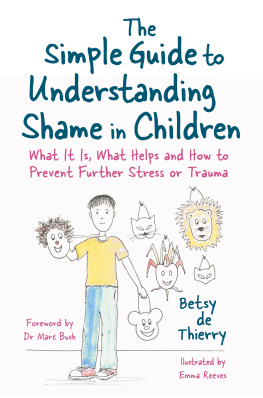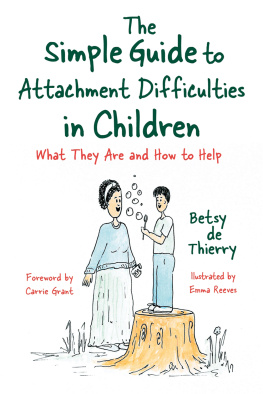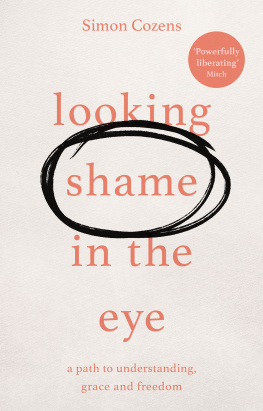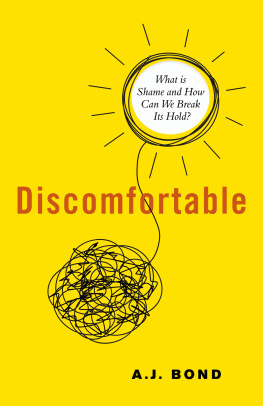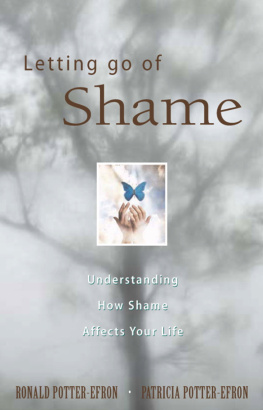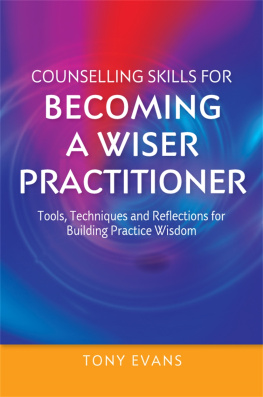
The Simple Guide
to Understanding
Shame in Children
What It Is, What Helps and How to
Prevent Further Stress or Trauma
BETSY d E THIERRY
Illustrated by Emma Reeves
Foreword by Dr Marc Bush

Jessica Kingsley Publishers
London and Philadelphia
CONTENTS
FOREWORD
In this simple, yet compressive, guide to shame, Betsy de Thierry provides us with a wonderfully descriptive account of how we can better understand and respond to childrens experiences of shame.
Shame experiences are important for us to focus on, as many of us are too quick to misinterpret them as feelings of guilt, anxiety, regret, embarrassment or disgust. Perhaps the best explanation for this is that we would all rather not have to consider our own experiences of shame, because it involves confronting the memories, beliefs and sensations that make us feel ashamed.
de Thierry eloquently describes the ways in which shame can pollute social relationships, depriving chil-dren of the contact, sense of community and relationality that protects them from poorer mental health outcomes in adulthood. This makes shame an intensely painful, but very natural emotional state, as it arises out of our human need to belong. Children believe that if they do not comply and conform they will be lost, without a community and rejected. That is why we see children who have experienced the most neglectful and abusive starts in life, frequently justifying or explaining away the behaviour of their parents or carers they are worried that they will not survive without them. Some of these children are left with the shame of being complicit in a potentially toxic family environment for the purposes of survival.
It is additionally shameful for a child to recognize and acknowledge that the very people who brought them into the world and were meant to care for them, didnt. AND that (in a shame-filled way) they think that relates to who they are as person, or what they did as a child. It is therefore important to remember that for many children disclosing the experiences they are having, and asking for help in itself can be an exceptionally shame-filled experience, especially if they are not met well by an adult.
When parenting or working with children, we need to become shame-informed to build awareness of how shame works and it s detrimental , or even devastating, effect on a childs development and future. de Thierry provides a practical guide to doing this, by offering insight on how best to support children to challenge feelings of badness and wrongness that arise from shame. In doing so, the later section shows how adults can encourage children to speak about shame experiences, through building calm, compassionate and empathic responses to both the behaviours children present with, and the beliefs and thoughts they express.
It is clear that expanding the horizons of emotional literacy and creative responses in children will increase their ability to make sense of and successfully navigate shame. As de Thierry argues this must be done with the intention of providing children with new ways of belonging and forms of kind and reciprocal connection, which will support them to build their own resilience, courage and self-compassion in the face of shaming situations. Reading this guide will provide an excellent insight into how we can all avoid inadvertently shaming children and create shame-resilience and healing.
Dr Marc Bush
PREFACE
How is it possible to write a book that simplifies such a profound, unpleasant and complex concept?
In this book I have included research findings from journals, guidance from books for professionals and knowledge from experienced practitioners about shame, but I have simplified and summarized their findings so that they are accessible to all. I have tried to make it easy to read and not too heavy although thats a real challenge with a subject as complex as shame. Its important to spread knowledge and awareness of shame so we can help the next generation be free from some of the challenges associated with it that are evident in significant proportions in our society today.
The first four chapters of this book explore what shame is and how it affects us; the middle four chapters look at symptoms of shame. They explore the behaviours that often result from a sense of profound shame and what helps those children. The last two chapters explain ways to heal from shame and build shame resilience.
As a psychotherapist, teacher, mum and friend, I have seen shame rear its ugly but subtle, invisible, powerful head in many ways and places: in schools, in parenting techniques, in organizations, and so many other settings. I have also seen the life-changing negative impact that shame has created within the depths of the person impacted, even when it is so often hidden behind coping mechanisms.
I was stalked and harassed for four years before an arrest was made, and in that time I was fascinated and saddened by how many people responded with shame to the assault on my personal reputation. I had threatening emails and many malicious messages along with seeing over 40 domain names bought up in my name, not being able to have access to emails in my name as they were in use by someone else and finding out that malicious emails had been sent anonymously, lying about me to people I was contracted to work with. In this frightening time when I was constantly discovering new shocking cyber attacks aimed at harming my professional reputation, I noticed the shame that I had to cognitively fight because I knew I had done nothing wrong. These attacks were the result of a few people who felt shame and couldnt bear the pain and turmoil, so had to use coping mechanisms that we explore in the middle chapters. That is how I became immensely familiar with the shame that I recognized in my work in the trauma centres, both in the victims who were totally not to blame and also in those who hurt others.
Thankfully, I have also seen the relief that results when shame is recognized and named, its role in causing problems is acknowledged and understood and thus, slowly, its impact is reduced.
In this book we will explore the way shame can be experienced and how it can impact behaviour, memory, learning, emotions and relationships, with the aim of acknowledging and thereby reducing its power.
There will be examples to illustrate how shame presents in children throughout the book. I hope it will help and transform the lives of those seeking an answer to some of the complex questions they face with the children in their world.
I have added a Further Reading section with suggestions for those of you who want to dig deeper than the simple guidance offered in this book I could have written much more, but my intention in writing this book is to convey the essentials for people who dont have the time to read the specialist research and books which are also available.
There have been deep-thinking, reflective practi-tioners that have gone before me, and I am grateful to these professionals who have taken time to notice human behaviours and themes and attempt to analyze them so that we can be healthier humans! In some ways I feel awkward summarizing their lifes work in such a concise book, but I hope they would applaud the motivation.
I am writing to help those of you working with and/or living with children, who are committed to seeing them develop into healthy adults with a strong sense of identity, a confident ability to reflect and an ease in feeling and articulating feelings.
Children are only able to flourish and to develop the ability to form positive, fulfilling relationships to be the best them that they can be with these foundations. Its only if the toxicity of shame is reduced that healthy individuals and communities can be created!
Next page
